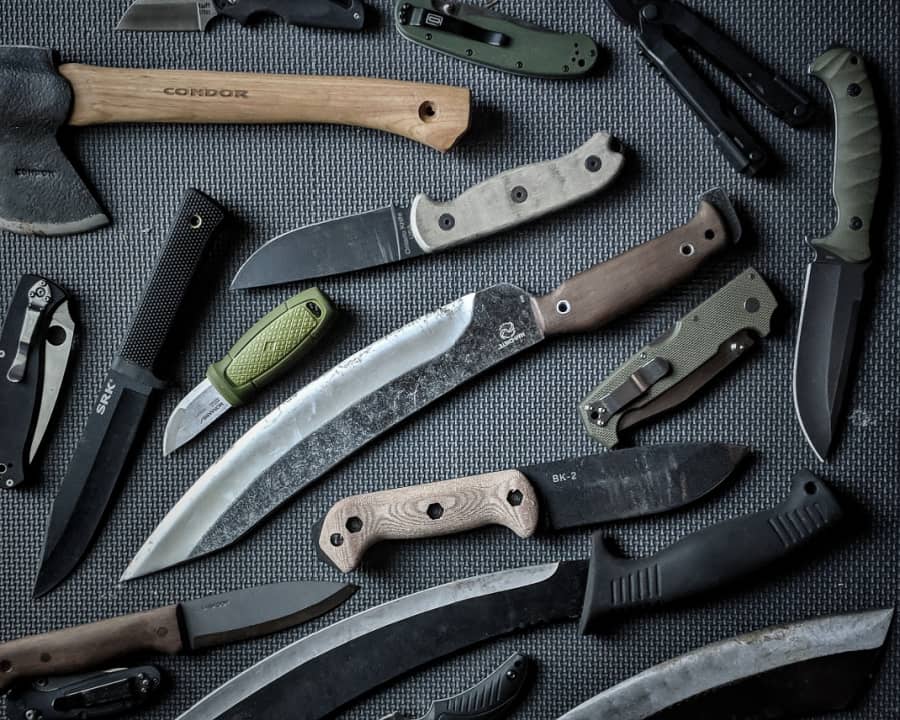What is a Survival Knife?
The tools that you bring into the great outdoors often dictate how much you will, or will not, enjoy the experience. That applies to everything from cooking gear to sleeping bags, but especially to knives. A good knife can make many tasks easier, a reflection of its versatility and its power. When it comes to knives, more isn’t always better; savvy bushmasters know the advantages of a tried-and-true simple tool over a designer brand with bells and whistles. What you don’t bring can sometimes be just as valuable as what you do bring, which is why the class of tools called survival knives walk the line between minimalism and functionality. What is a survival knife, and how do you pick out the best one?
A Brief History
Like many other pieces of outdoor gear, survival knives began their life in the military and were soon quickly adopted by civ who realized their value. In the 1950s, Air Force pilots were issued the Air Force Survival Knife, a burly piece of equipment that had the size, sharpness, and sheer cutting power needed to slice through a cockpit or hatch or fuselage and make a clean exit from a downed aircraft.
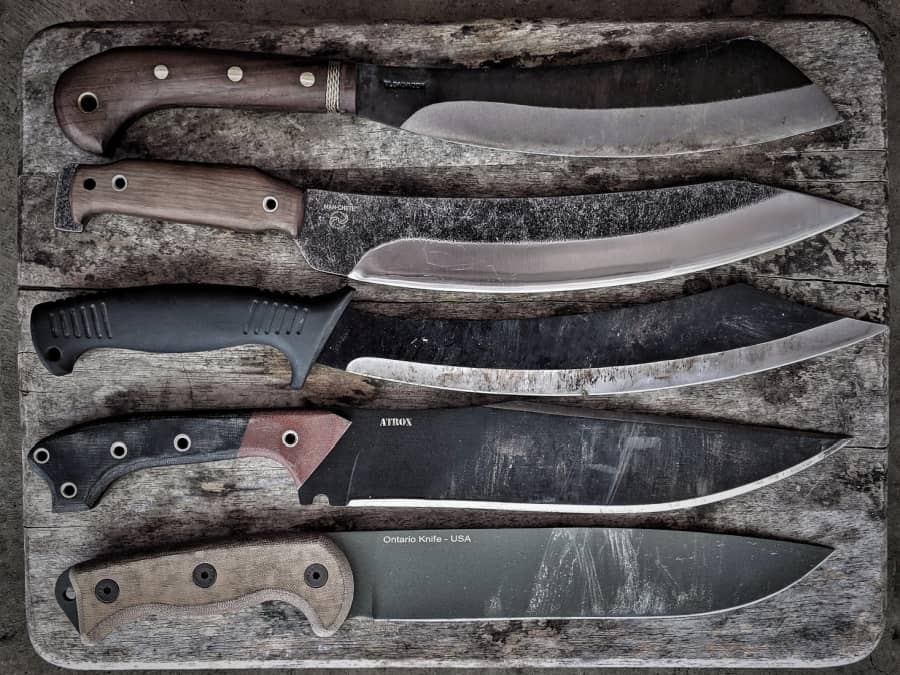
Hollywood, ever a source of realism and down-to-earth portrayals, has influenced the industry too. The release of the movie First Blood featured Sylvester Stallone as Rambo, whose survival knife became as iconic as his headband or his bulging muscles or his remarkable talent at killing other people. Rambo’s knife was great for his on-screen survival, but its sheer size and saw teeth make it less than practical in real life (we’ll get to that below). The same is true for the laughably giant blade wielded by his Australian counterpart, Crocodile Dundee.
Today, you can find endless quantities and styles of survival knives at weapons shows, outdoor expos, and flea markets. Some are so over-the-top that they are less of an outdoor tool and more of a decoration, or just a conversation starter. How do you tell the good from the bad?
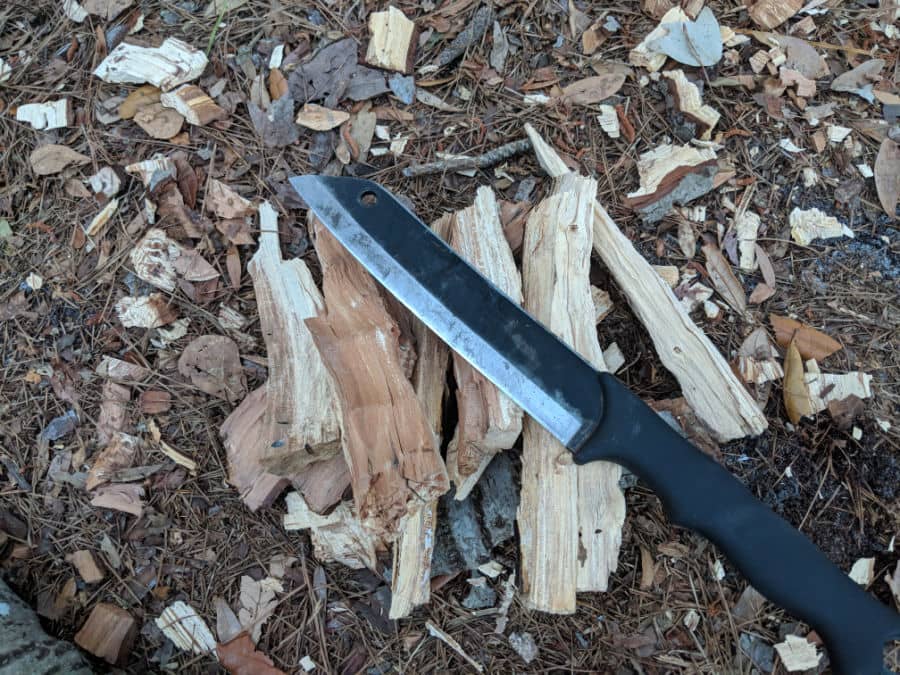
What’s in a Name
Like much other outdoor gear, there is no set definition of a survival knife, and it is possible to get most or all the benefits of this tool from two very different products. However, blades named or rated as survival knives have several features in common.
- Fixed blades. When you think of an outdoor knife, you likely think of a Swiss Army knife that folds many different blades in and out of its body. While Swiss Army knives have many benefits, this folding blade presents a weak point. Survival knives have fixed blades because they are meant to withstand more punishment over a longer duration of time, able to cut through tougher material and endure more stress than a folding blade.
- Full tang. The tang of a knife is its central metal body; a butter knife is nothing but tang, while the aforementioned Swiss Army knife only has a tang as far as the folding axle. A full tang knife means that its core runs the length from blade tip through the handle. A partial tang stops at or in the handle, which presents a flaw whenever you need to apply maximum pressure. Some knives have hollow handles for holding matches or antiseptic or water purification tablets; these are useful, but less useful than the full-length blade.
- Carbon steel. Inexpensive stainless steel is good for an everyday knife, one meant for basic cutting or slicing, with the only maintenance being a wipedown. For a survival knife, however, tougher carbon steel is a must. This ramps up the cost, and requires methodical cleaning to prevent rust, but is worth its weight in the most challenging scenarios. Carbon steel, unlike stainless steel, also creates a spark when it hits flint.
- Blade length and width. Pick up a survival knife and you might be surprised by its size. These are strong instruments: at 4 to 8 inches in length, the blade is about the length of a large smartphone or a tablet; at .17 to .25 inches in width, they are about as thick as a slice of Christmas ham. Bigger is not always better: once you go above a 8 inches or so, a machete or an axe may be a better tool for the job.
- Single edge with a straight back. A survival knife is not a dagger to be plunged into an enemy’s back, but a focal point for applying force. A single edge provides more precision and less risk than a double-bladed knife, especially since you may need it for tasks with a significant risk of cutting yourself (such as first aid applications). A straight back makes it easier to start fires, apply leverage, or brace the knife.
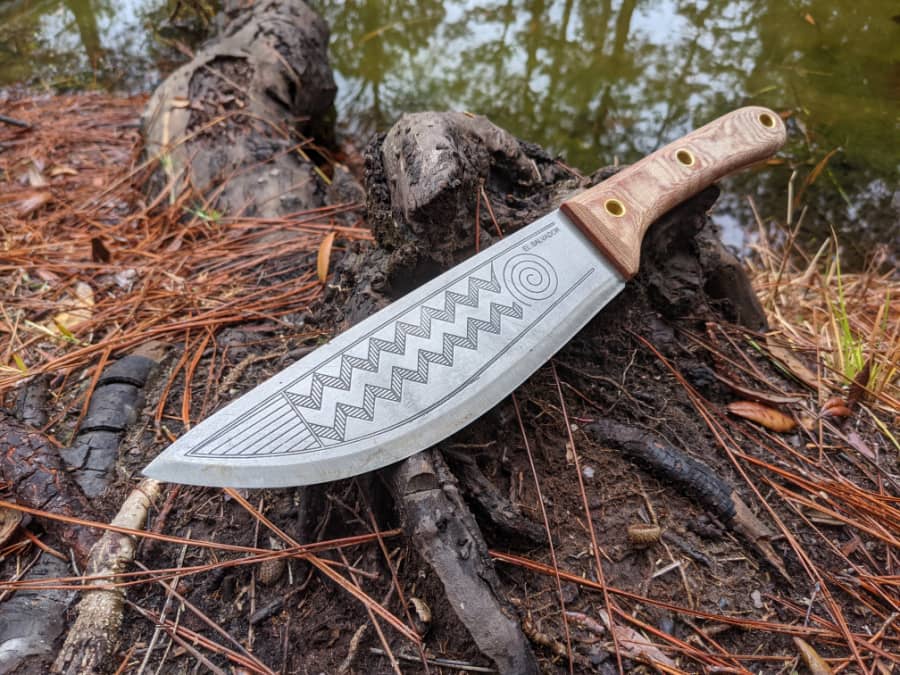
When to Use a Survival Knife
As the name suggests, you likely will not need to bring a survival knife on a 2-mile hike around a lake, and it will probably be overkill for a camping trip where there is a grocery store within a quick drive. A survival knife is most useful in outdoor situations where you are far away from support persons and facilities, communications are not guaranteed, and there are greater environmental risks in your path, from bears to thick bush. Survival knives are perhaps most useful when you anticipate using your surroundings to help with the most elements of, well, survival. This can include shelter (clearing a space and establishing the necessary frameworks), starting a fire, (cutting brush, sparking flint), food gathering (harvesting plants and/or hunting animals), or first aid (cutting wood for splints, removing ticks, etc.).
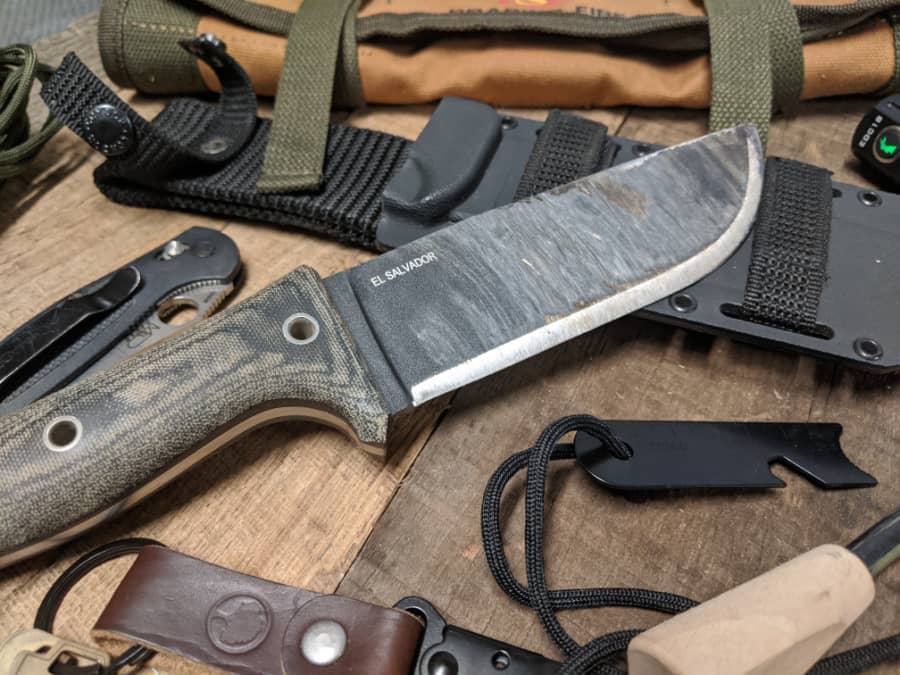
How to Buy
As with so many other pieces of equipment for the great outdoors, you typically get what you pay for when it comes to a survival knife. A cheap pocketknife, good for whittling or de-boning fish, may only cost a few bucks. By contrast, a survival knife with good steel may cost fifty to one hundred dollars. Remember also that each knife needs its own sheath (although these are usually included in the final cost) and you absolutely never want to substitute another knife’s sheath.
Knife manufacturers are often known for their quality and those with the best reputation offer a variety of survival knives. KA-BAR, manufacturer of military-grade knives, features many fixed-blade carbon steel knives, as do Spyderco, ESEE, and Gerber. The best blade is usually not a factor of any specific specifications, but rather an innate feel of it. How well does it cut, how well does it carve, and how well does it baton (drive through wood)? Do you get a good grip on it, and will that grip stay strong when the knife gets wet or muddy? Is the steel tough enough to do its job, without being too difficult to sharpen and clean?
Like many other pieces of gear, you will probably know the perfect survival knife when you pick it up. Remember that you may one day be in a situation where you have little or nothing else to rely on.

Blair Witkowski is an avid watch nut, loves pocket knives and flashlights, and when he is not trying to be a good dad to his nine kids, you will find him running or posting pics on Instagram. Besides writing articles for Tech Writer EDC he is also the founder of Lowcountry Style & Living. In addition to writing, he is focused on improving his client’s websites for his other passion, Search Engine Optimization. His wife Jennifer and he live in coastal South Carolina.

